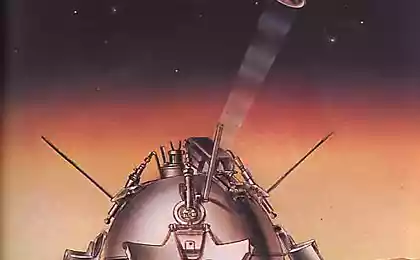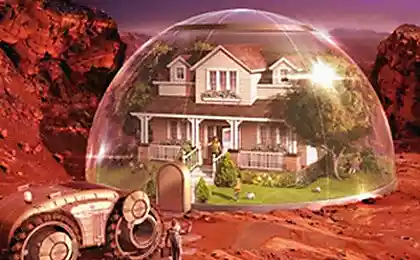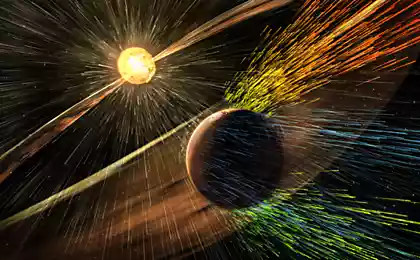806
Weather on Mars: dust storms and aurora
Mars Atmosphere and Volatile Evolution (MAVEN) наблюдал two unexpected phenomena in the Martian atmosphere : great, but fine dust cloud at altitudes between 150 km and 300 km above the surface and the aurora in the northern hemisphere.

While NASA can not explain how the dust came to such heights.
"If the dust comes from the atmosphere, it says that we lack knowledge of some fundamental processes in the Martian atmosphere," - said Lyle Anderson of the University of Colorado's Laboratory for Atmospherics and Space Physics (CU LASP), Boulder, Colorado.
Despite its height observed clouds, it poses no threat to spacecraft orbiting Mars.
Powerful aurora seized the northern hemisphere of Mars and penetrate deep into the atmosphere. Glow observed in the ultraviolet and unusually deeply penetrate deep into the atmosphere. As the world is due to the flow of charged particles, but unlike Earth, Mars has no magnetic field, by which auroras observed in the Earth's poles. Mars nothing prevents particles to enter into the atmosphere in any place.
Source: geektimes.ru/post/247492/

While NASA can not explain how the dust came to such heights.
"If the dust comes from the atmosphere, it says that we lack knowledge of some fundamental processes in the Martian atmosphere," - said Lyle Anderson of the University of Colorado's Laboratory for Atmospherics and Space Physics (CU LASP), Boulder, Colorado.
Despite its height observed clouds, it poses no threat to spacecraft orbiting Mars.
Powerful aurora seized the northern hemisphere of Mars and penetrate deep into the atmosphere. Glow observed in the ultraviolet and unusually deeply penetrate deep into the atmosphere. As the world is due to the flow of charged particles, but unlike Earth, Mars has no magnetic field, by which auroras observed in the Earth's poles. Mars nothing prevents particles to enter into the atmosphere in any place.
Source: geektimes.ru/post/247492/
Tomorrow to see the eclipse and not damage your eyesight
The 3D-printer can print the nasal cartilage 16 minutes of the patient's own cells























